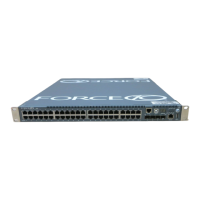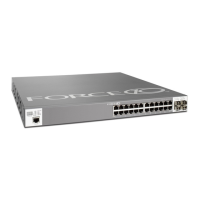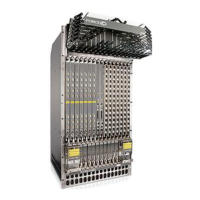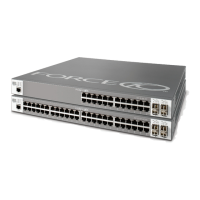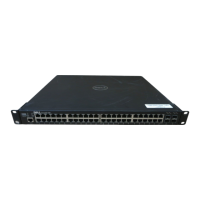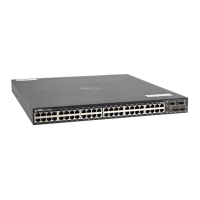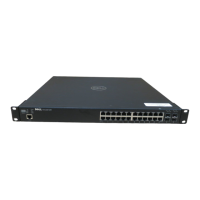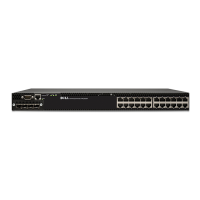Field Description
If the neighbor is disabled, the phrase (Admin shut) appears in this
column.
Example (S4810)
FTOS#sho ip bgp ipv4 multicast summary
BGP router identifier 100.10.10.1, local AS number 6400
BGP table version is 14, main routing table version 14
7 network entrie(s) and 7 paths using 972 bytes of memory
2 BGP path attribute entrie(s) using 112 bytes of memory
1 BGP AS-PATH entrie(s) using 35 bytes of memory
Neighbor AS MsgRcvd MsgSent TblVer InQ OutQ Up/Down
State/Pfx
25.25.25.25 6400 21 9 14 0 0
00:02:04 3
211.1.1.129 640 28 6 0 0 0 00:00:21
Active
FTOS#
BGP Extended Communities (RFC 4360)
BGP Extended Communities, as defined in RFC 4360, is an optional transitive BGP attribute.
BGP Extended Communities provides two major advantages over Standard Communities:
• The range is extended from 4-octet (AA:NN) to 8-octet (Type:Value) to provide enough number communities.
• Communities are structured using a new “Type” field (1 or 2-octets), allowing you to provide granular control/
filter routing information based on the type of extended communities.
deny
Use this feature to reject (deny) from the two types of extended communities, route origin (rt) or site-of-origin (soo).
C-Series, E-Series, S-Series, Z-Series
Syntax
deny {rt | soo} {as4 ASN4:NN | ASN:NNNN | IPADDR:NN}
To remove (delete) the rule, use the no deny {rt | soo} {as4 ASN4:NN |
ASN:NNNN | IPADDR:NN} command.
Parameters
rt Enter the keyword rt to designate a Route Origin community.
soo Enter the keyword soo to designate a Site-of-Origin community (also
known as Route Origin).
as4
ASN4:NN
Enter the keyword as4 followed by the 4-octet AS specific extended
community number in the format ASN4:NN (4-byte AS number:2-byte
community value).
ASN:NNNN
Enter the 2-octet AS specific extended community number in the
format ASN:NNNN (2-byte AS number:4-byte community value).
444

